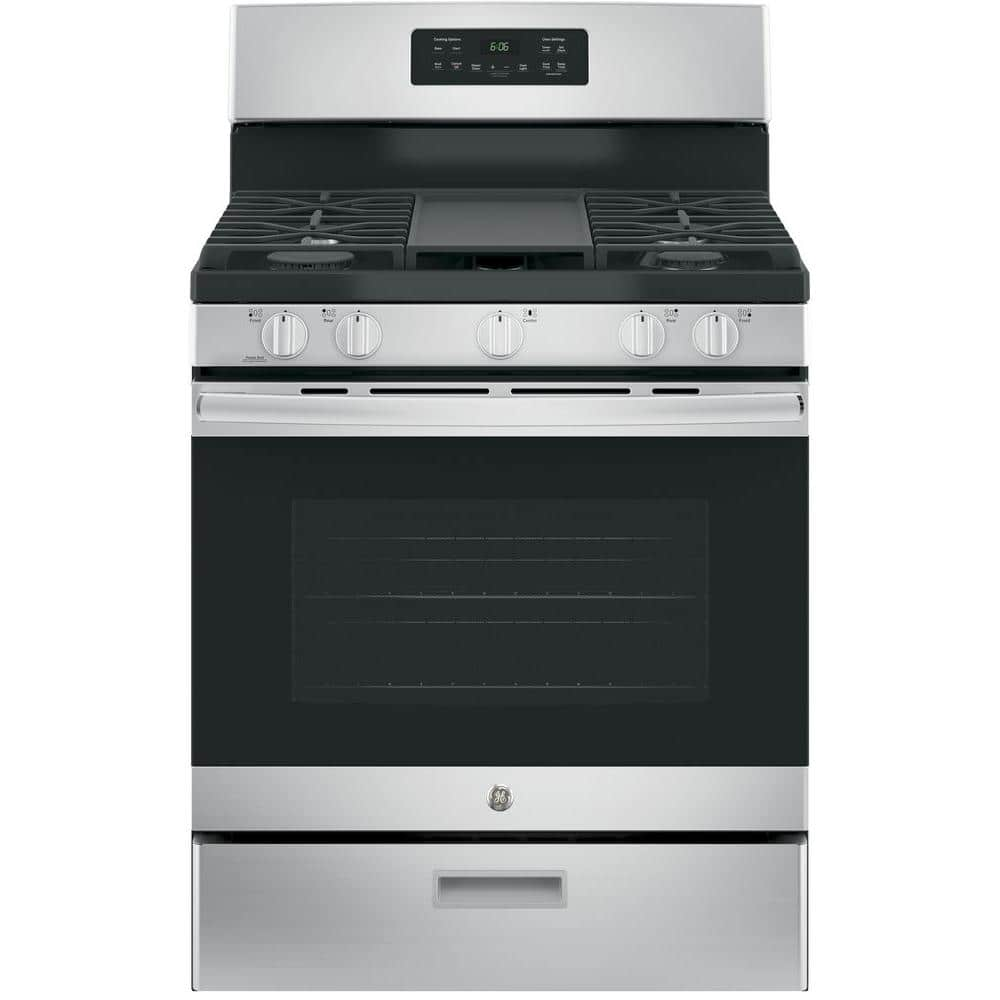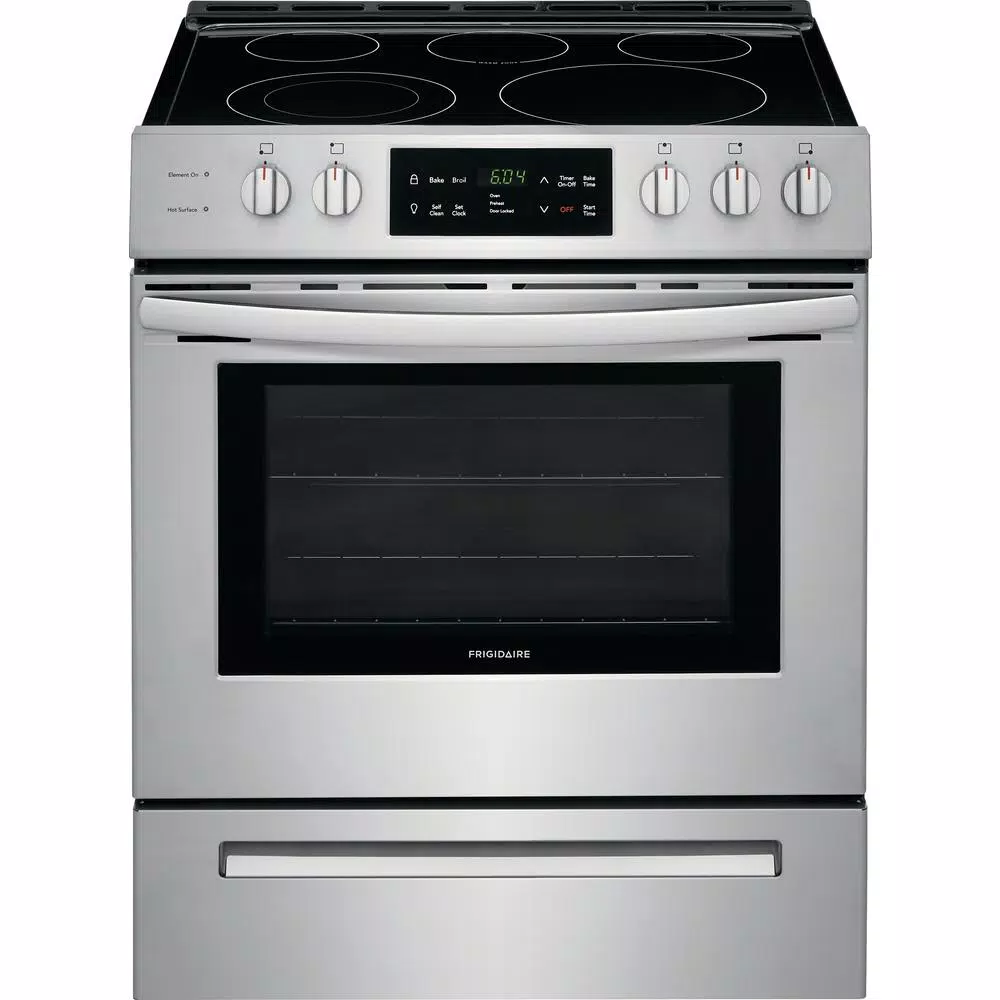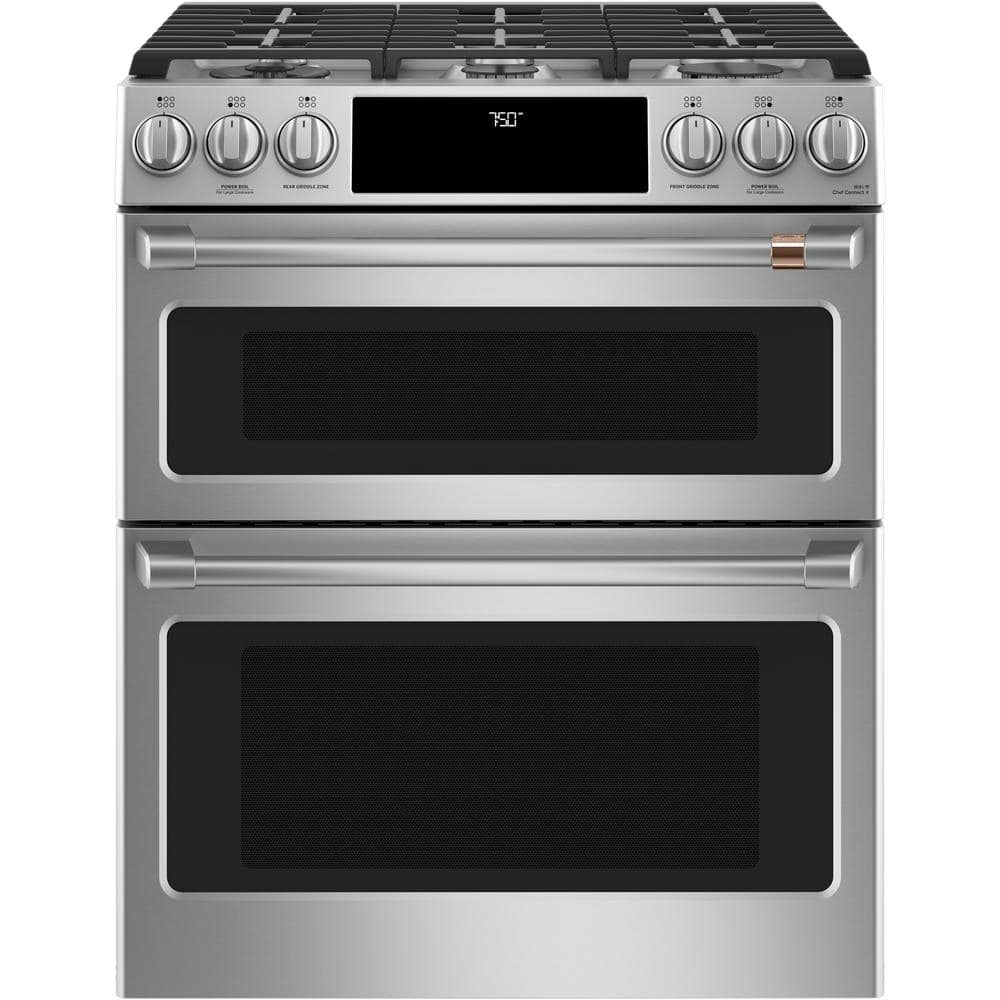GE 30 in. 5.0 cu. ft. Gas Range in Stainless Steel
Sealed cooktop contains spills and splatters for easy cleanups. Heavy-duty grates are dishwasher-safe for easy cleaning. Includes extra-large integrated nonstick griddle.
At GE Appliances, we bring good things to life, by designing and building the world’s best appliances. Our goal is to help people improve their lives at home by providing quality appliances that were made for real life. Whether it’s enjoying the tradition of making meals from scratch or tackling a mountain of muddy jeans and soccer jerseys, GE Appliances are crafted to support any and every task in the home.
- A large edge-to-edge cooktop cooking surface gives you extra room for pots and pans of all sizes and lets cookware move easily from burner to burner
- Extra-large integrated non-stick griddle cooks up to six grilled cheeses at once on the industry’s largest integrated griddle
- 15,000 BTU power boil burner delivers high heat for fast boiling
- Center oval burner large oval fifth burner is ideal for griddle cooking
- Save time and effort by steam-cleaning the oven after cooking
- With the Precise Simmer burner, delicate foods don’t burn with low, even heat
- Heavy duty, dishwasher safe grates easily and safely clean grates in the dishwasher
- 5.0 cu. ft. oven capacity cook more dishes at once
- Sealed cooktop burners contains spills and make cleaning quick and easy
- 2 oven racks can be figured in 6 positions to accommodate a variety of baking needs
- Limited 1-year warranty entire appliance
Additional information
| Depth With Door(s) Open 90 Degrees (In.) | 46.25 |
|---|---|
| Oven Interior Depth x Height x Width (in) | 19 x 19 x 24 |
| Product Depth x Height x Width (in) | 28.75 x 47.25 x 30 |
| Range Size | 30 in. |
| Certifications and Listings | UL Listed |
| Manufacturer Warranty | Limited 1 Year Warranty entire Appliances |






by Jimmy
My wife and I love this gas range. It is decorative and functional. The grill in between the 2 sets of burners is great. It is non-stick and cooks eggs and sausage easily. Cleans up easy as well. The burners are also very efficient, boiling up water in a few minutes rather than 5 minutes. We do not often use an oven and have not tried the oven or broiler yet.
by James
very nice stove! works wonderfully and love the look.
by Karen
So far everything is working great , I’ve only have had a few weeks.